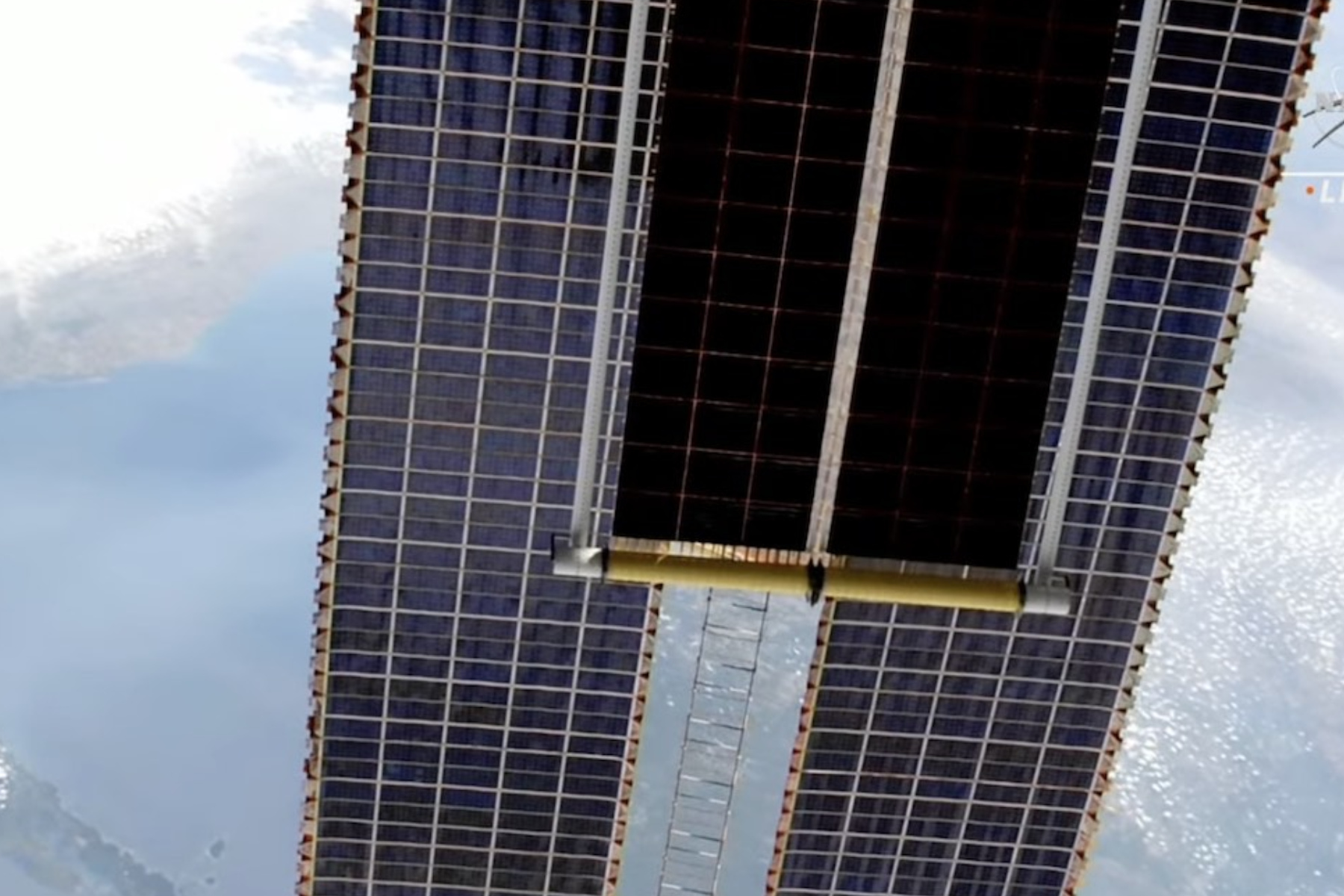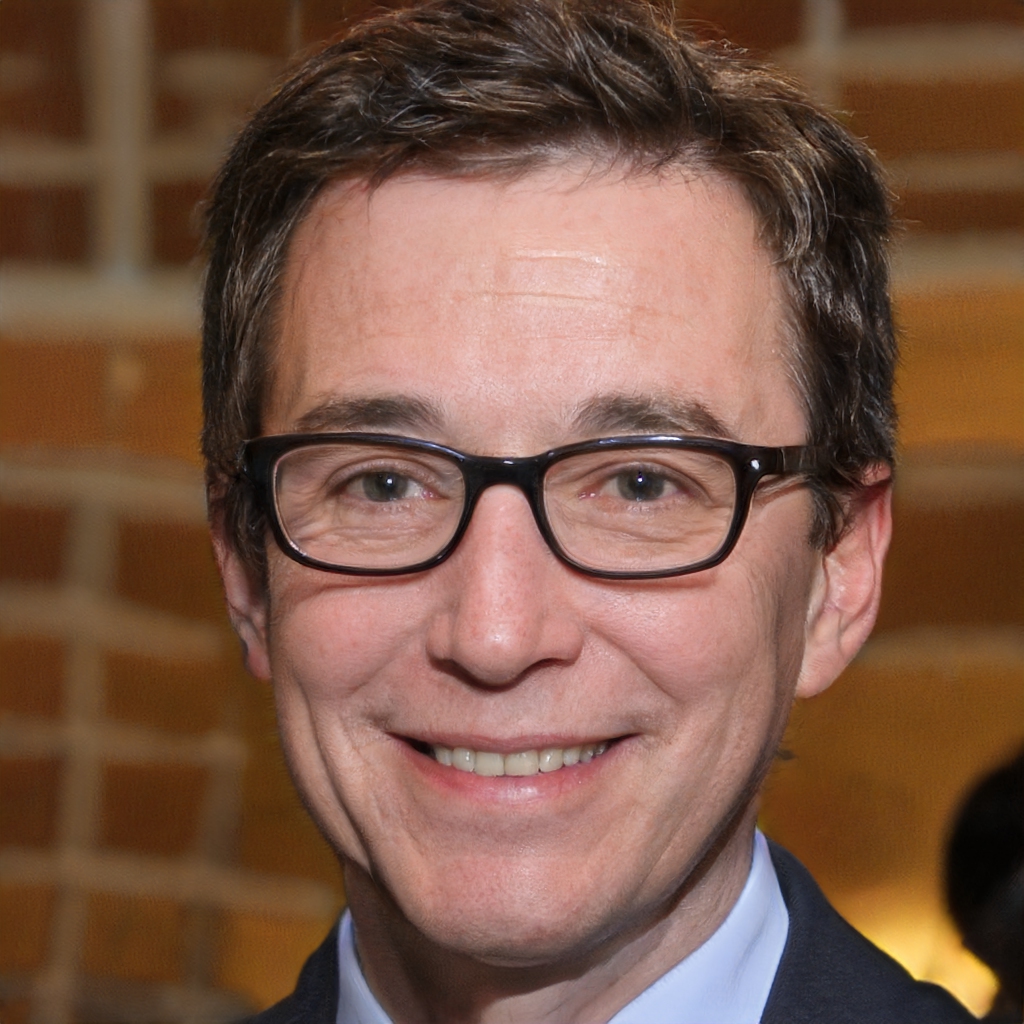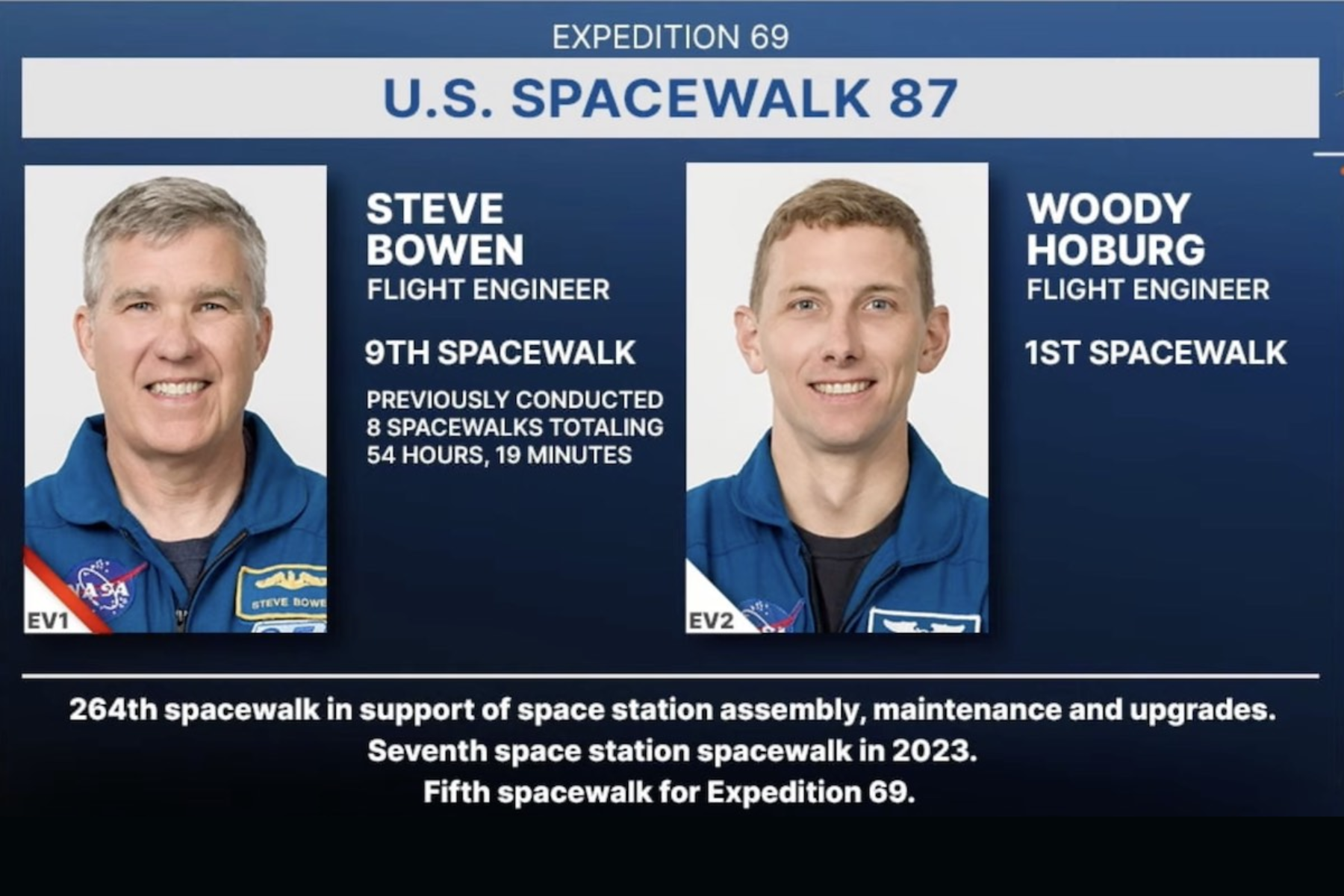Astronauts Install New Roll-out Solar Array Outside International Space Station
The astronauts install new roll-out solar array. Astronauts Steve Bowen and Woody Hoburg donned their spacesuits and floated outside the International Space Station on Friday to install and unroll an improved solar array wing delivered to the complex earlier this week by a SpaceX Cargo Dragon supply ship.The astronauts install new roll-out solar array. Astronauts Steve Bowen and Woody Hoburg donned their spacesuits and floated outside the International Space Station on Friday to install and unroll an improved solar array wing delivered to the complex earlier this week by a SpaceX Cargo Dragon supply ship.
Author:Camilo WoodReviewer:Dexter CookeJun 12, 202350 Shares50.3K Views

Astronauts Steve Bowen and Woody Hoburg donned their spacesuits and floated outside the International Space Station on Friday to install and unroll an improved solar array wing delivered to the complex earlier this week by a SpaceX Cargo Dragon supply ship. Astronauts install new roll-out solar arrayoutside International Space Station(ISS).
At 9:25 a.m. EDT (1325 UTC) on Friday, the astronauts switched their spacesuits to internal battery power. Bowen and Hoburg depressurized and exited the Quest airlock before heading to the starboard, or right, side of the space station's football field-long power truss to begin work mounting the new solar array onto a bracket fixture and deploying the solar blanket.
Earlier this week, a SpaceX Cargo Dragon spacecraft delivered the two new ISS Roll-Out Solar Arrays, or iROSA units, to the space station. The unpiloted cargo capsule launched Monday from NASA's Kennedy Space Center in Florida and docked at the space station on Tuesday.
The lab's Canadian-built robotic arm then removed the solar arrays from the Dragon spacecraft's rear cargo bay and positioned them on the station's truss as a temporary stowage location.
Bowen And Hoburg Resumed Their Spacewalk On Friday
Hoburg climbed into a foot restraint on the station's robotic arm after the astronauts removed restraining bolts on one of the two new solar panels. Hoburg rode the robotic arm to the new solar array's permanent home on the S4 truss section, just inboard from the right end of the space station's backbone structure after the solar array was released from its carrier.
The spacewalkers attached the rolled-up solar array to a mounting bracket constructed on a previous spacewalk, then unfolded a hinge to unfold the two blankets that comprise the iROSA unit, similar to opening a book cover. Bowen used an electrical tool to tighten eight bolts on the iROSA's mounting bracket.
The attachment bracket connects the new arrays to the station's power conduits and rotary joints, which maintain the solar wings pointing at the sun while the spaceship speeds around the Earth at over 17,000 mph.
The International Space Station contains eight power channels, each powered by one solar array wing that extends from the station's truss backbone. The new solar array, which was installed on Friday, will generate electricity for the space station's 1A power channel.

Bowen and Hoburg then attached four electrical connectors to the new roll-out solar array, which was positioned to partially cover one of the original solar panels carried by a space shuttle mission during the lab's construction 16 years ago this week. The eight earlier solar arrays faded over time as planned, therefore NASA purchased six roll-out solar panels to restore the space station's power generation capacity above its initial capacity.
NASA intends to order a final pair of roll-out solar arrays to finish the space station's electrical upgrade, ensuring that the lab has adequate power to support research until the station's scheduled decommissioning date in 2030.
After connecting a "Y" wire that allowed power from both the existing solar array and the new iROSA to flow into the station's power supply, Hoburg loosened two more bolts that kept the iROSA blankets wrapped up for launch.
It took around 10 minutes for the blankets to unroll to their full length of 63 feet (19 meters). Each roll-out solar array is approximately 20 feet (6 meters) broad and half the length and width of the station's original solar arrays.
Despite their reduced size, the new arrays produce roughly the same amount of energy as one of the station's old solar panels. The deployment mechanism's design avoids the requirement for motors to drive the solar array open.
After unfolding the blanket, the astronauts adjusted tensioning bolts to keep the iROSA blanket in place.

Bowen and Hoburg then returned to the space station's truss to prepare another iROSA unit for installation on the far right end of the truss structure during a spacewalk on June 15.
After finishing their chores, the astronauts returned to the Quest airlock and closed the hatch. At 3:28 p.m. EDT (1928 UTC), the astronauts began repressurizing the airlock, formally ending the spacewalk. The spacewalk lasted 6 hours and 3 minutes.
The journey into space Friday was Bowen's seventh mission as an astronaut and Hoburg's first. It was the 264th spacewalk in support of International Space Station assembly and maintenance since 1998, and the seventh this year outside the research outpost.

Camilo Wood
Author
Camilo Wood has over two decades of experience as a writer and journalist, specializing in finance and economics. With a degree in Economics and a background in financial research and analysis, Camilo brings a wealth of knowledge and expertise to his writing.
Throughout his career, Camilo has contributed to numerous publications, covering a wide range of topics such as global economic trends, investment strategies, and market analysis. His articles are recognized for their insightful analysis and clear explanations, making complex financial concepts accessible to readers.
Camilo's experience includes working in roles related to financial reporting, analysis, and commentary, allowing him to provide readers with accurate and trustworthy information. His dedication to journalistic integrity and commitment to delivering high-quality content make him a trusted voice in the fields of finance and journalism.

Dexter Cooke
Reviewer
Dexter Cooke is an economist, marketing strategist, and orthopedic surgeon with over 20 years of experience crafting compelling narratives that resonate worldwide.
He holds a Journalism degree from Columbia University, an Economics background from Yale University, and a medical degree with a postdoctoral fellowship in orthopedic medicine from the Medical University of South Carolina.
Dexter’s insights into media, economics, and marketing shine through his prolific contributions to respected publications and advisory roles for influential organizations.
As an orthopedic surgeon specializing in minimally invasive knee replacement surgery and laparoscopic procedures, Dexter prioritizes patient care above all.
Outside his professional pursuits, Dexter enjoys collecting vintage watches, studying ancient civilizations, learning about astronomy, and participating in charity runs.
Latest Articles
Popular Articles
